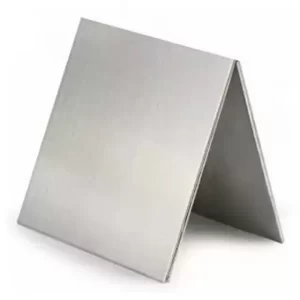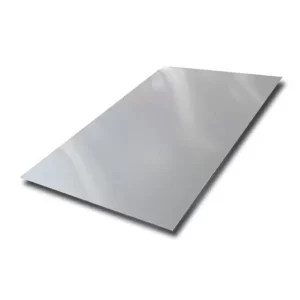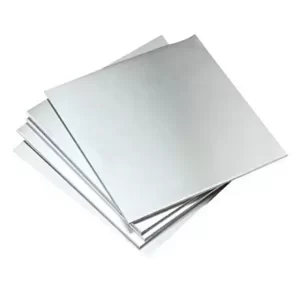What is the difference between 304 and 316 stainless steel sheet?
Stainless steel plates are widely used in many fields such as construction, manufacturing, food processing and medical treatment due to their excellent corrosion resistance and aesthetics. Among the many types of stainless steel, 304 and 316 stainless steel plates are the two most common materials. Although they both belong to the category of stainless steel, there are significant differences in chemical composition, physical properties, corrosion resistance, mechanical properties and application areas.
1) Differences in chemical composition
First of all, from the perspective of chemical composition, the main difference between 304 and 316 stainless steel plates is whether molybdenum (Mo) is added. The chemical composition of 304 stainless steel plates mainly includes 18-20% chromium (Cr) and 8-10.5% nickel (Ni), as well as a small amount of carbon (C), manganese (Mn) and other elements. On this basis, 316 stainless steel plates add an additional 2-3% of molybdenum, which makes the two different in performance.
● 304 stainless steel: also known as 18/8 stainless steel, because of its high chromium and nickel content, it has good corrosion resistance and processing properties.
● 316 stainless steel: Due to the addition of molybdenum, not only the corrosion resistance is improved, but also the strength and heat resistance are enhanced.
2) Physical properties and mechanical properties
Due to the different chemical compositions, 304 and 316 stainless steel plates also have differences in physical properties and mechanical properties.
● 304 stainless steel: It has high toughness and processing performance, but relatively low strength and heat resistance. Suitable for general engineering applications, such as construction, furniture, kitchen equipment, etc.
● 316 stainless steel: Due to the addition of molybdenum, its strength and heat resistance are higher, and its corrosion resistance is also stronger. It is especially suitable for high temperature, high humidity and highly corrosive environments, such as marine environments, chemical processing plants, etc.
3) Differences in corrosion resistance
One of the main characteristics of stainless steel is its corrosion resistance. In this regard, 316 stainless steel plate has a more obvious advantage over 304 stainless steel.
● 304 stainless steel: Although it has good corrosion resistance, its corrosion resistance will be relatively reduced in an environment containing chlorides.
● 316 stainless steel: Due to the addition of molybdenum, its corrosion resistance has been significantly improved, especially in environments with high chloride ion content, such as seawater or chloride solutions.
4) Different application fields
Due to the above differences, 304 and 316 stainless steel sheets also have different focuses in their application fields.
● 304 stainless steel: Widely used in home decoration, food processing, storage and transportation. Due to its moderate price and excellent comprehensive performance, it has become the preferred material for many household appliances and containers.
● 316 stainless steel: Commonly used in marine environments, medical equipment, chemical processing plants and other occasions that require higher corrosion resistance and strength. Its excellent corrosion resistance and mechanical properties make it an ideal choice for these fields.
5) RollingPrice difference
In terms of price, since 316 stainless steel adds precious metal elements such as molybdenum and nickel, its production cost is relatively high, so the market price is also relatively high. Generally speaking, the price of 316 stainless steel sheet will be a certain percentage higher than that of 304 stainless steel.
6) Conclusion
In summary, there are significant differences between 304 and 316 stainless steel plates in terms of chemical composition, physical properties, corrosion resistance, mechanical properties, and application areas. When choosing stainless steel plates, the most suitable material should be determined based on the specific use environment and needs. For general purposes, 304 stainless steel is sufficient to meet the needs; for occasions that require higher corrosion resistance and strength, 316 stainless steel plates should be selected.








